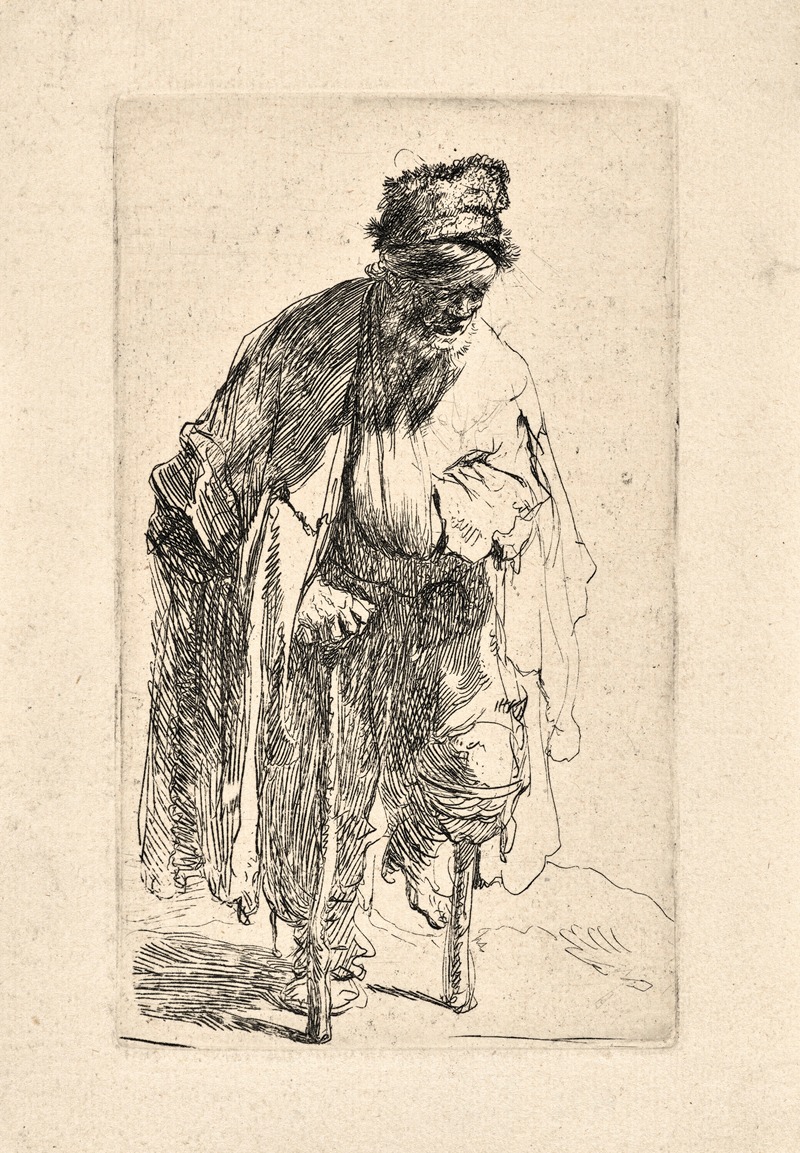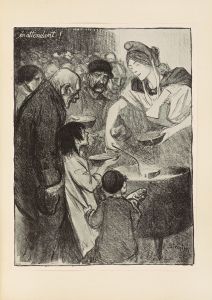
Beggar with a Wooden Leg
A hand-painted replica of Rembrandt van Rijn’s masterpiece Beggar with a Wooden Leg, meticulously crafted by professional artists to capture the true essence of the original. Each piece is created with museum-quality canvas and rare mineral pigments, carefully painted by experienced artists with delicate brushstrokes and rich, layered colors to perfectly recreate the texture of the original artwork. Unlike machine-printed reproductions, this hand-painted version brings the painting to life, infused with the artist’s emotions and skill in every stroke. Whether for personal collection or home decoration, it instantly elevates the artistic atmosphere of any space.
"Beggar with a Wooden Leg" is an etching created by the renowned Dutch artist Rembrandt van Rijn. This artwork is part of a series of etchings that Rembrandt produced depicting beggars and vagrants, a subject that he explored extensively in his early career. The etching is believed to have been created around 1630, during a period when Rembrandt was living and working in Leiden, before he moved to Amsterdam.
The etching portrays a beggar with a wooden leg, standing with a crutch under one arm and a hat in his hand, which he appears to be using to solicit alms. The figure is rendered with remarkable detail and sensitivity, showcasing Rembrandt's keen observation skills and his ability to convey the human condition. The beggar's tattered clothing, the texture of his wooden leg, and the expression on his face are all meticulously depicted, highlighting Rembrandt's technical prowess and his empathy for his subjects.
Rembrandt's interest in depicting beggars and the poor can be seen as part of a broader trend in 17th-century Dutch art, where artists often focused on everyday life and the lower classes. These works were not just studies in poverty but also served as moral and social commentaries. In "Beggar with a Wooden Leg," Rembrandt captures the dignity and resilience of the beggar, inviting viewers to reflect on the humanity of those who are often marginalized by society.
The etching is relatively small, measuring approximately 15.7 x 12.8 cm (6.2 x 5 inches). Despite its size, the artwork is powerful in its impact, demonstrating Rembrandt's ability to convey complex emotions and narratives within a confined space. The use of light and shadow in the etching is particularly noteworthy, as Rembrandt employs chiaroscuro to create depth and to draw attention to the beggar's face and hands.
"Beggar with a Wooden Leg" is part of several collections and has been studied extensively by art historians. It is considered an important example of Rembrandt's early work and his mastery of the etching technique. The etching is held in various museums and collections around the world, including the Rijksmuseum in Amsterdam and the British Museum in London, where it continues to be appreciated by art enthusiasts and scholars alike.
Rembrandt's etchings of beggars, including "Beggar with a Wooden Leg," are significant not only for their artistic quality but also for their contribution to the understanding of social issues in the 17th century. They provide valuable insights into the lives of the poor and the artist's compassionate approach to his subjects. Through these works, Rembrandt challenges viewers to see beyond the surface and to recognize the inherent dignity of every individual, regardless of their social status.
In conclusion, "Beggar with a Wooden Leg" is a testament to Rembrandt's skill as an etcher and his deep empathy for the human condition. The artwork remains a poignant and powerful piece that continues to resonate with audiences today, offering a glimpse into the life of a 17th-century beggar and the enduring relevance of Rembrandt's artistic vision.


















